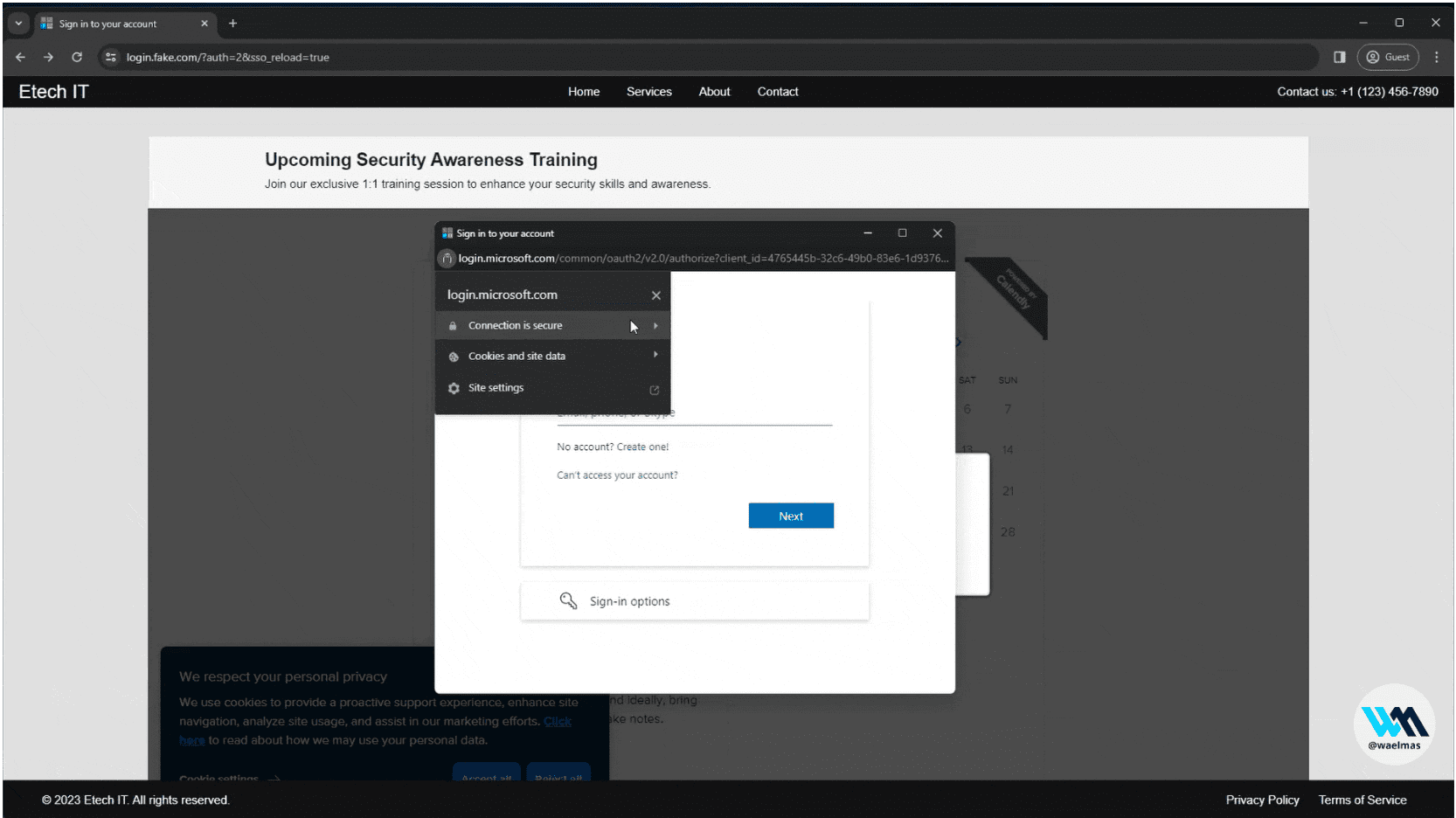Bypassing Microsoft Login Pages: Frameless BITB’s Innovative Approach

Frameless BITB
A new approach to Browser In The Browser (BITB) without the use of iframes, allows the bypass of traditional framebusters implemented by login pages like Microsoft.
This POC code is built for using this new BITB with Evilginx, and a Microsoft Enterprise phishlet.

Backstory – The Why
Over the past year, I’ve been experimenting with different tricks to craft the “perfect” phishing attack. The typical “red flags” people are trained to look for are things like urgency, threats, authority, poor grammar, etc. The next best thing people nowadays check is the link/URL of the website they are interacting with, and they tend to get very conscious the moment they are asked to enter sensitive credentials like emails and passwords.
That’s where Browser In The Browser (BITB) came into play. Originally introduced by @mrd0x, BITB is a concept of creating the appearance of a believable browser window inside of which the attacker controls the content (by serving the malicious website inside an iframe). However, the fake URL bar of the fake browser window is set to the legitimate site the user would expect. This combined with a tool like Evilginx becomes the perfect recipe for a believable phishing attack.
The problem is that over the past months/years, major websites like Microsoft implemented various little tricks called “framebusters/framekillers” which mainly attempt to break iframes that might be used to serve the proxied website like in the case of Evilginx.
In short, Evilginx + BITB for websites like Microsoft no longer works. At least not with a BITB that relies on iframes.
The What
A Browser In The Browser (BITB) without any iframes! As simple as that.
Meaning that we can now use BITB with Evilginx on websites like Microsoft.
Evilginx here is just a strong example, but the same concept can be used for other use-cases as well.
The How
Framebusters target iframes specifically, so the idea is to create the BITB effect without the use of iframes, and without disrupting the original structure/content of the proxied page. This can be achieved by injecting scripts and HTML besides the original content using search and replace (aka substitutions), then relying completely on HTML/CSS/JS tricks to make the visual effect. We also use an additional trick called “Shadow DOM” in HTML to place the content of the landing page (background) in such a way that it does not interfere with the proxied content, allowing us to flexibly use any landing page with minor additional JS scripts.
Demo
Disclaimer
This tool is for educational and research purposes only. It demonstrates a non-iframe-based Browser In The Browser (BITB) method. The author is not responsible for any misuse. Use this tool only legally and ethically, in controlled environments for cybersecurity defense testing. By using this tool, you agree to do so responsibly and at your own risk.
Install & Use
Copyright (c) 2024, Wael Al Masri





